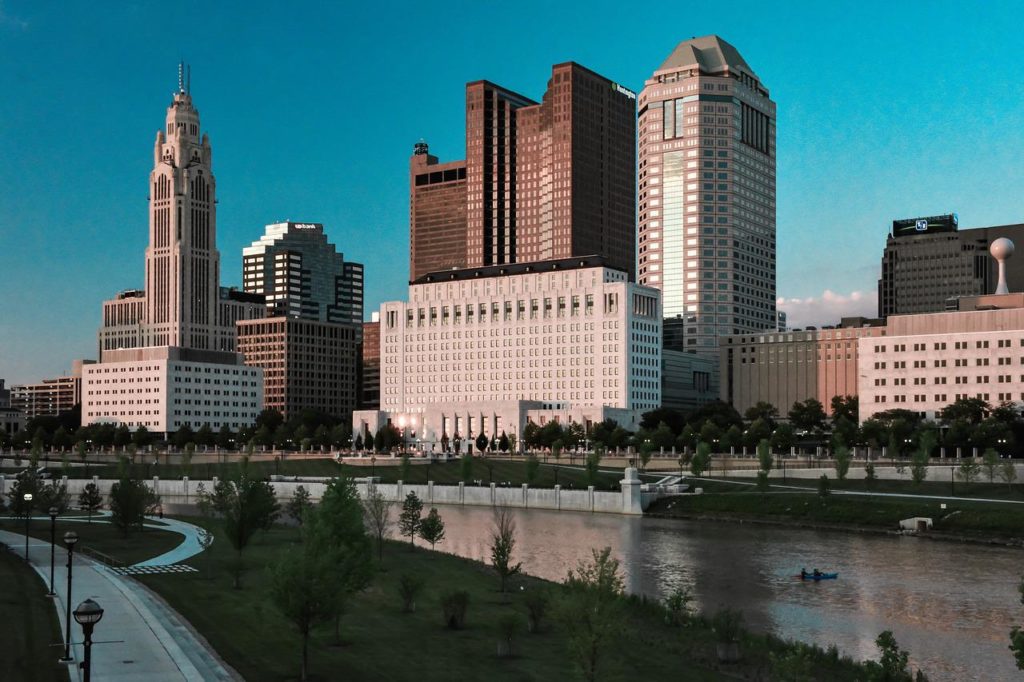
Article Summary: National Parks Near Columbus
National Parks Near Columbus! There’s so much more to the Buckeye State than The Ohio State University. In this article, More Than Just Parks gives you some exciting vacation destinations within a day’s drive of Columbus.
I’ve been to so many of these amazing places since retiring from teaching in 2018. Did I mention that I taught history? I spent a lifetime teaching about the history behind these momentous sites. Then I got to see them firsthand. And now I’m sharing the stories of these incredible places with you. It doesn’t get any better than that!
Columbus is most famous for having a vibe that’s young, hip and innovative, thanks to an innovative arts scene and booming tech industry.
Ohio’s state capital is also home to one of the largest college campuses in the country, so it’s packed with energy and creativity year-round.
And there’s also some amazing national parks that are within a day’s drive (or less) of the city.
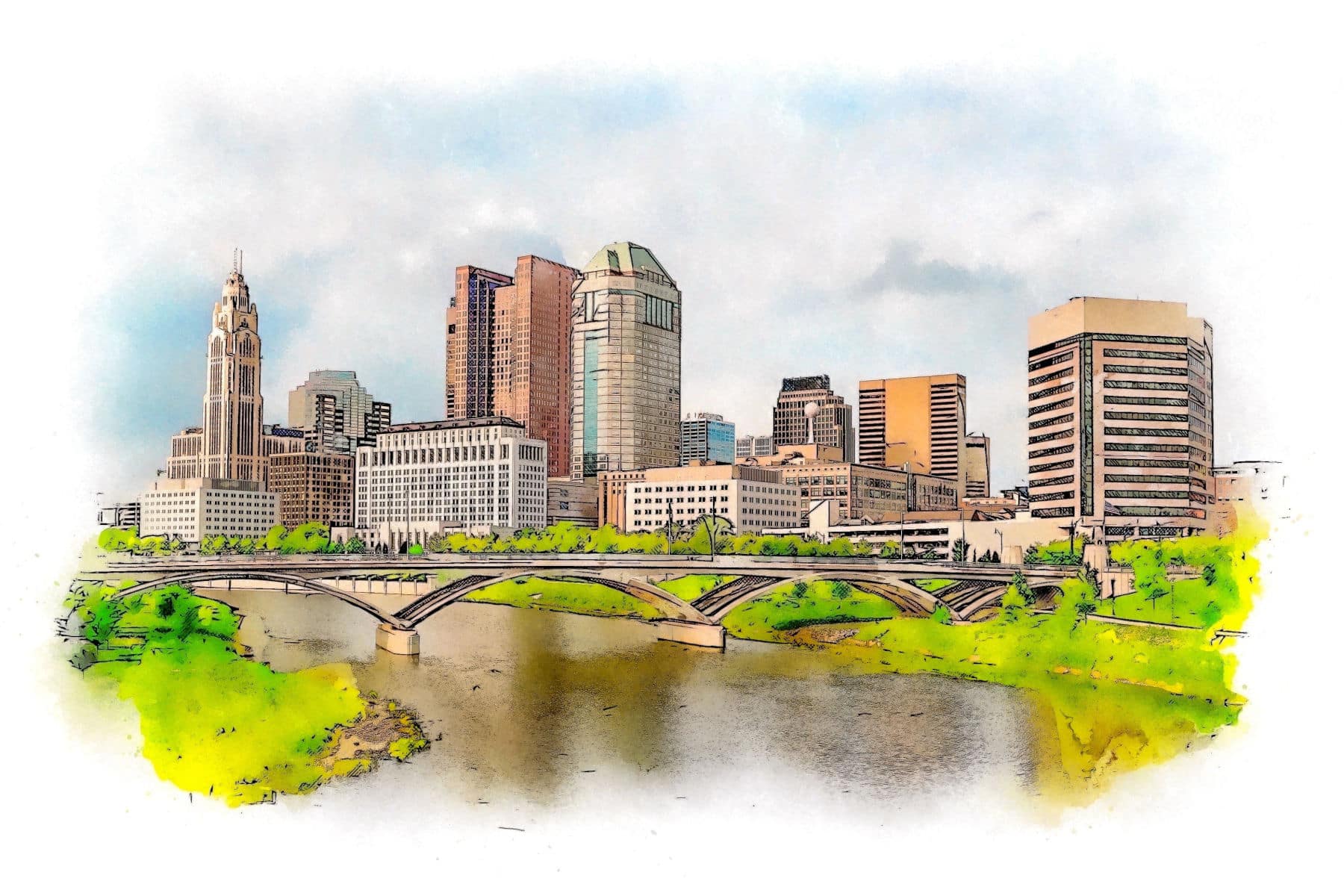
So, What Is A National Park?
We get asked that question a lot because there’s a difference between a “national park” and a “national park site.” To help you understand that difference you might want to check out our article titled: What Is A National Park Really?
If you’re planning a trip to Columbus then one book that I highly recommend is: Columbus Neighborhoods: A Guide to the Landmarks of Franklinton, German Village, King-Lincoln, Olde Town East, Short North & the University District by Tom Betti.
Now let’s go ahead with 10 reasons why you’ll want to hop in your car and make a day’s drive from Columbus to one of these truly amazing places.
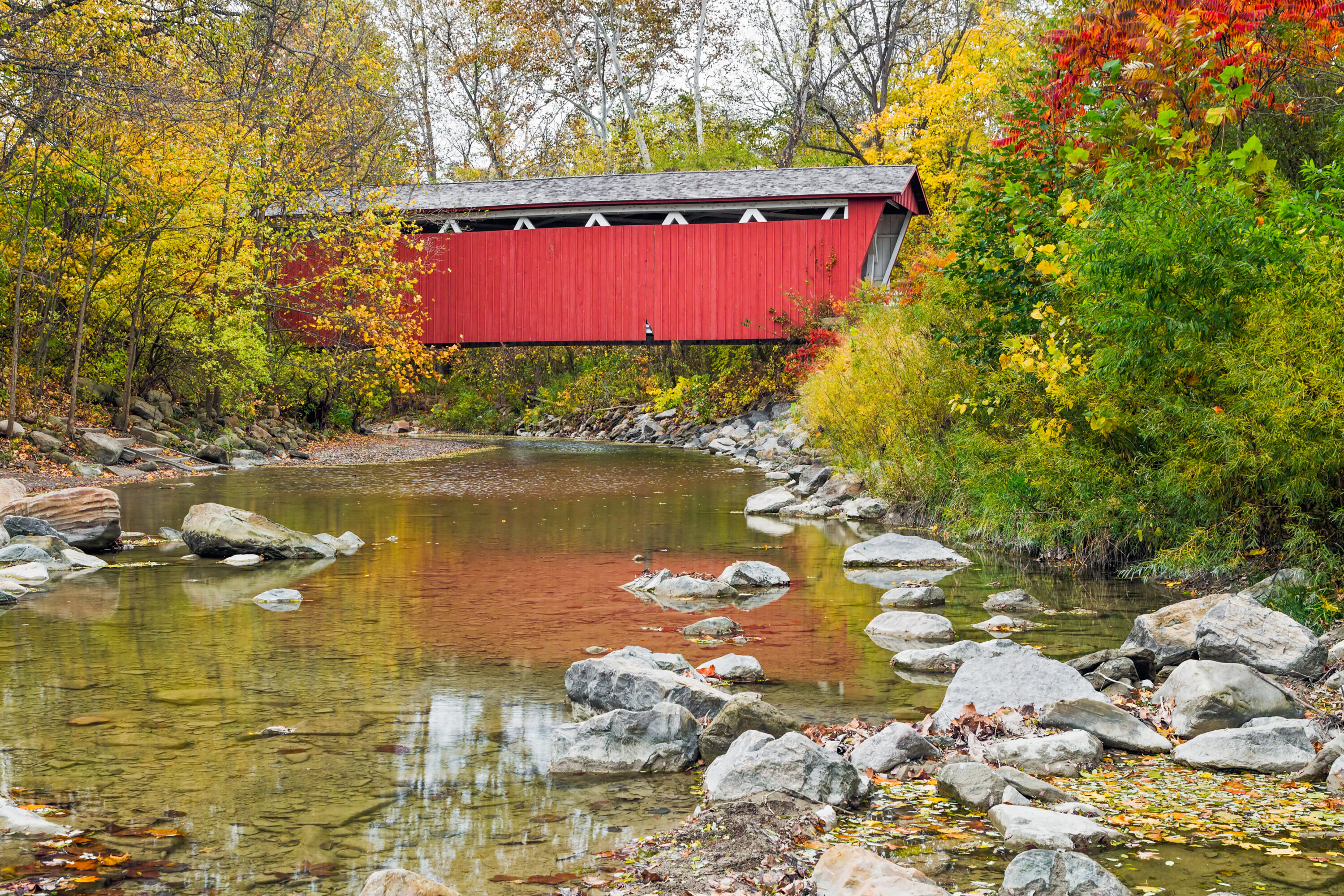
Table Of Contents: National Parks Near Columbus
The Best National Parks Near Columbus
1. Charles Young Buffalo Soldiers National Monument
Distance From Columbus: One hour via I-71 S.
For almost 30 years, I taught high school history. What impresses me most about the field of history are the amazing stories of men and women whose contributions changed the course of human events. In doing so, they helped to bring about the world we have today.
The people we know, however, are few compared to the people we don’t. A case in point is Colonel Charles Young who was an African American military officer, educator, and diplomat.
Young was born on March 12, 1864 in Mays Lick, Kentucky and died on January 8, 1922 in Lagos, Nigeria.
He was the third African American to graduate from the United States Military Academy at West Point, in 1889. He served in the United States Army for over 20 years, and reached the rank of lieutenant colonel.
Young was the first African American to hold the rank of a full colonel, and the first to command a regular Army regiment. He served in various posts, including as a military attaché in Haiti and Liberia.
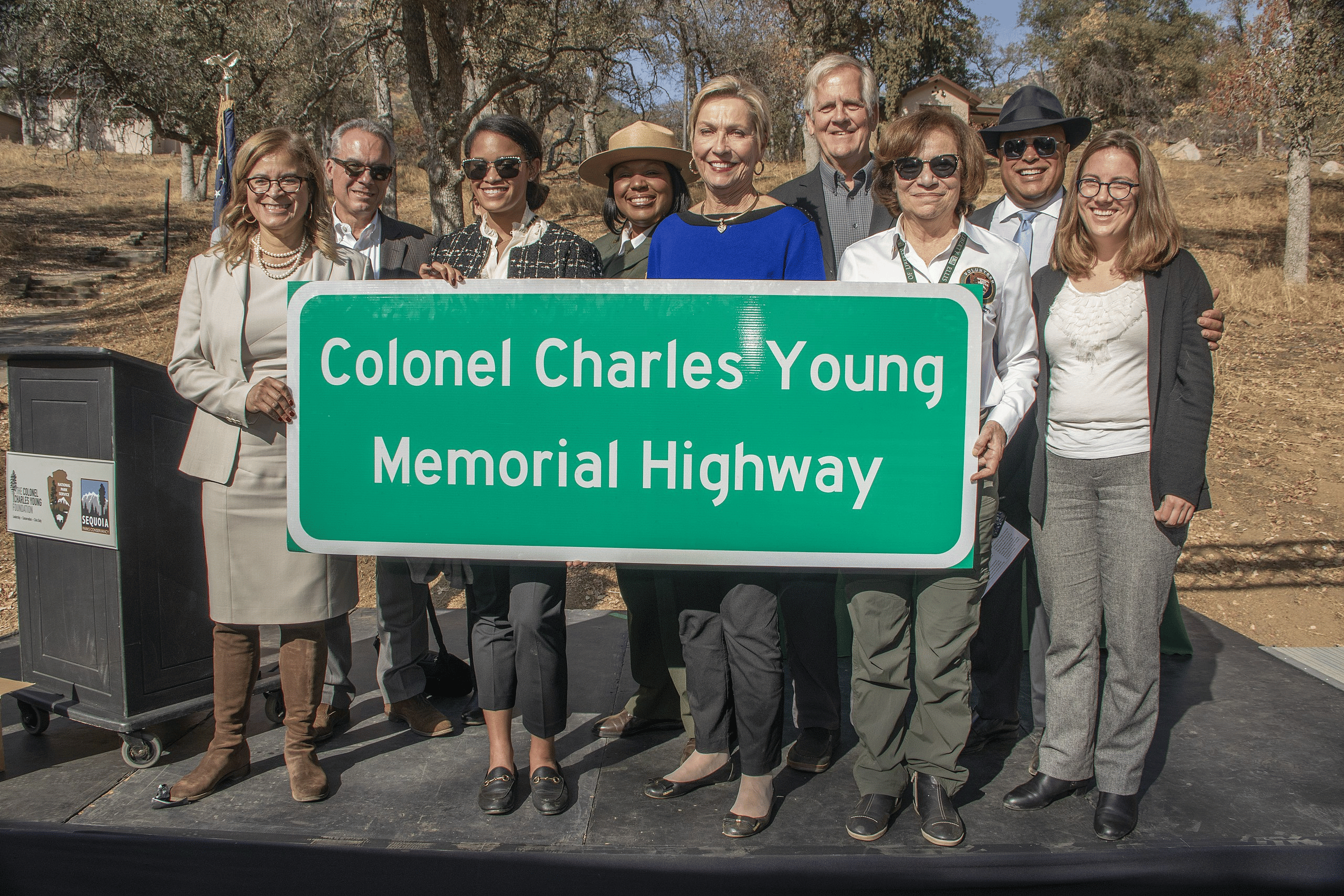
He Was An Accomplished Educator & Diplomat Too
In addition to his military career, Young was also an accomplished educator and diplomat. He served as a professor at Wilberforce University, a historically black college, and as the first African American superintendent of a national park, serving at Sequoia and General Grant National Parks (now Kings Canyon National Park) from 1903-1907.
He was also an accomplished diplomat, serving as a U.S. Military attaché to Liberia and Haiti, as well as an advocate for civil rights. He was also a member of the all-black “Buffalo Soldiers” Regiment, which were the first African American regiments in the U.S. Army.
Young’s contributions were recognized by the U.S. Army and the National Park Service, who named a campground at Sequoia National Park after him and established the Charles Young Buffalo Soldiers National Monument in Wilberforce, Ohio.
Overall, Charles Young was a trailblazer in the U.S. Army, who was an accomplished military officer, educator and diplomat, who broke barriers and opened the door for other African Americans to serve in the military and other roles.

RELATED: 20 BEST Black History Sites For You To Visit
Things To Do At The Charles Young Buffalo Soldiers National Monument
Some of the things you can do at the monument include:
- Take a tour of the Charles Young House: Visitors can take a tour of the house where Charles Young lived, which is now a National Historic Landmark. Visitors can learn about the life of Charles Young and the history of the Buffalo Soldiers.
- Visit the Visitors Center: The Visitors Center has exhibits and displays that provide information on the history of the Buffalo Soldiers, Charles Young and the role of African Americans in the military.
- Take a hike: The monument has a 0.6 miles hiking trail, that takes visitors through the historic district of Wilberforce University and the Charles Young House.
- Attend ranger-led programs: The park offers a variety of ranger-led programs, including guided walks, talks, and demonstrations. These programs provide visitors with an in-depth look at the history and significance of the Buffalo Soldiers and Charles Young.
- Explore the Wilberforce University: Visitors can also explore Wilberforce University, which was the first African American university in the United States and where Charles Young taught.
- Visit nearby Dayton Aviation Heritage National Historical Park: Dayton Aviation Heritage National Historical Park is located nearby, it’s the birthplace of aviation and the Wright Brothers.
- Visit the nearby towns and communities: The monument is located near the towns of Dayton and Springfield, which offer visitors a variety of shopping, dining, and lodging options.
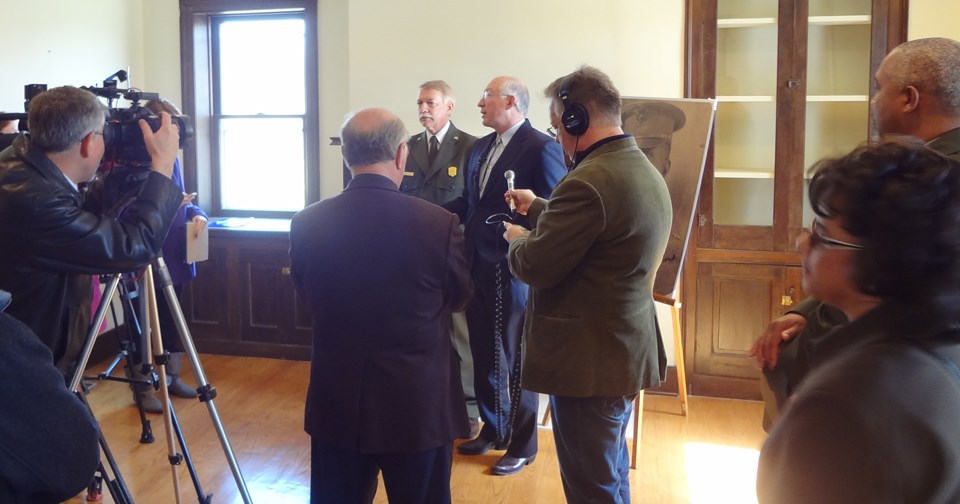
RELATED: 20 Best Black History Sites In America For You To Visit
2. Cuyahoga Valley National Park
Distance From Columbus: One hour & 55 minutes via I-71 N.
Cuyahoga Valley National Park is the only national park in the state of Ohio. The history of the park can be traced back to the mid-19th century, when the area was first settled by European immigrants.
The area was primarily used for agriculture and industry, and the Ohio and Erie Canal was built in the early 1800s to connect the Great Lakes with the Ohio River. The canal brought economic growth to the region but also had a significant impact on the local environment.
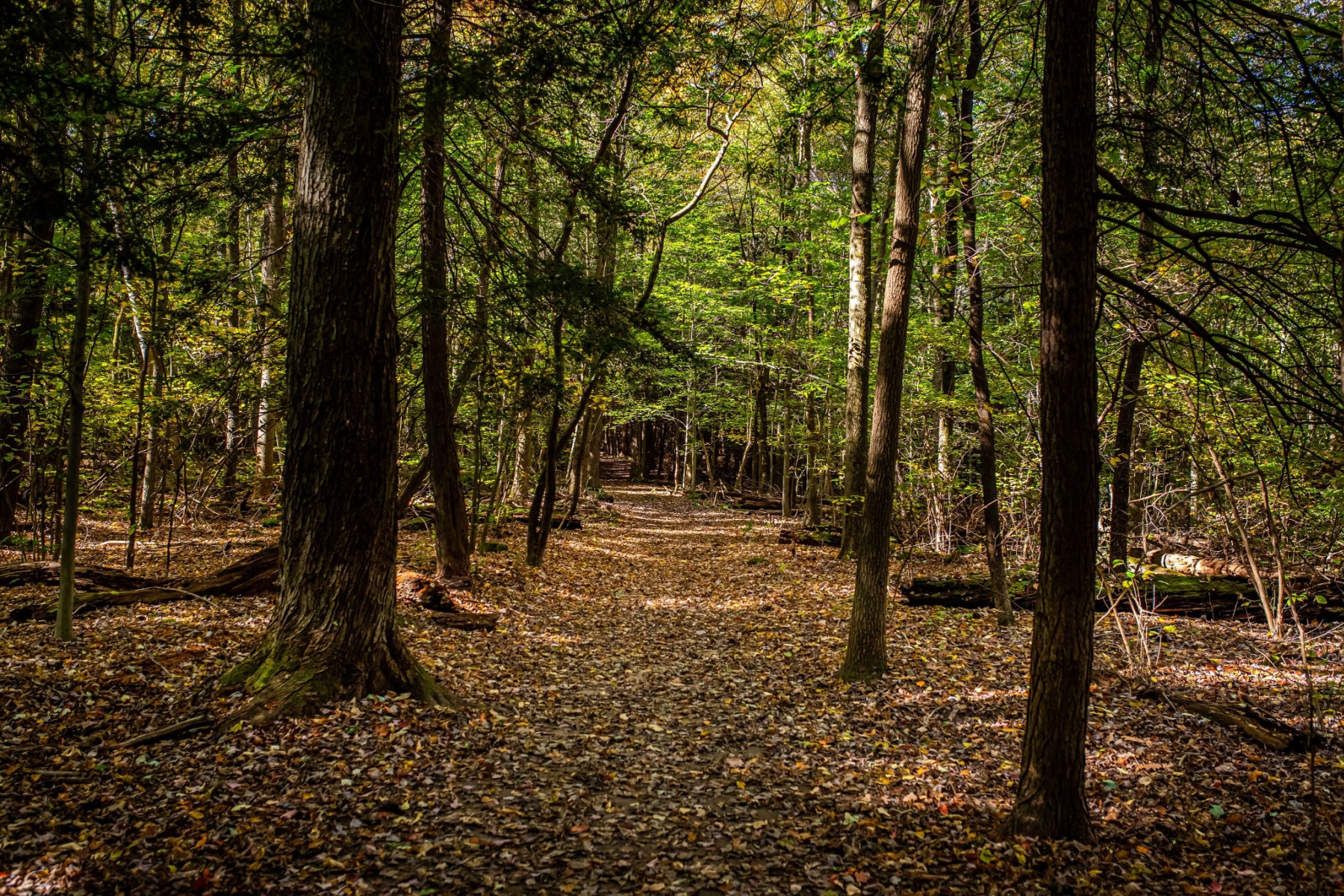
The Cuyahoga Valley National Recreation Area
In the early 20th century, the National Park Service (NPS) began to explore the possibility of creating a national park in the Cuyahoga River valley. In 1974, the Cuyahoga Valley National Recreation Area was established, and in 2000, it was officially designated as a national park.
The park has a rich cultural history, with many historic structures and landmarks, including the Ohio and Erie Canal, the Cuyahoga Valley Scenic Railroad, and the Everett Road Covered Bridge.
Visitors can learn about the history of the area and see how the park has changed over time through ranger-led programs, guided walks, and self-guided tours.
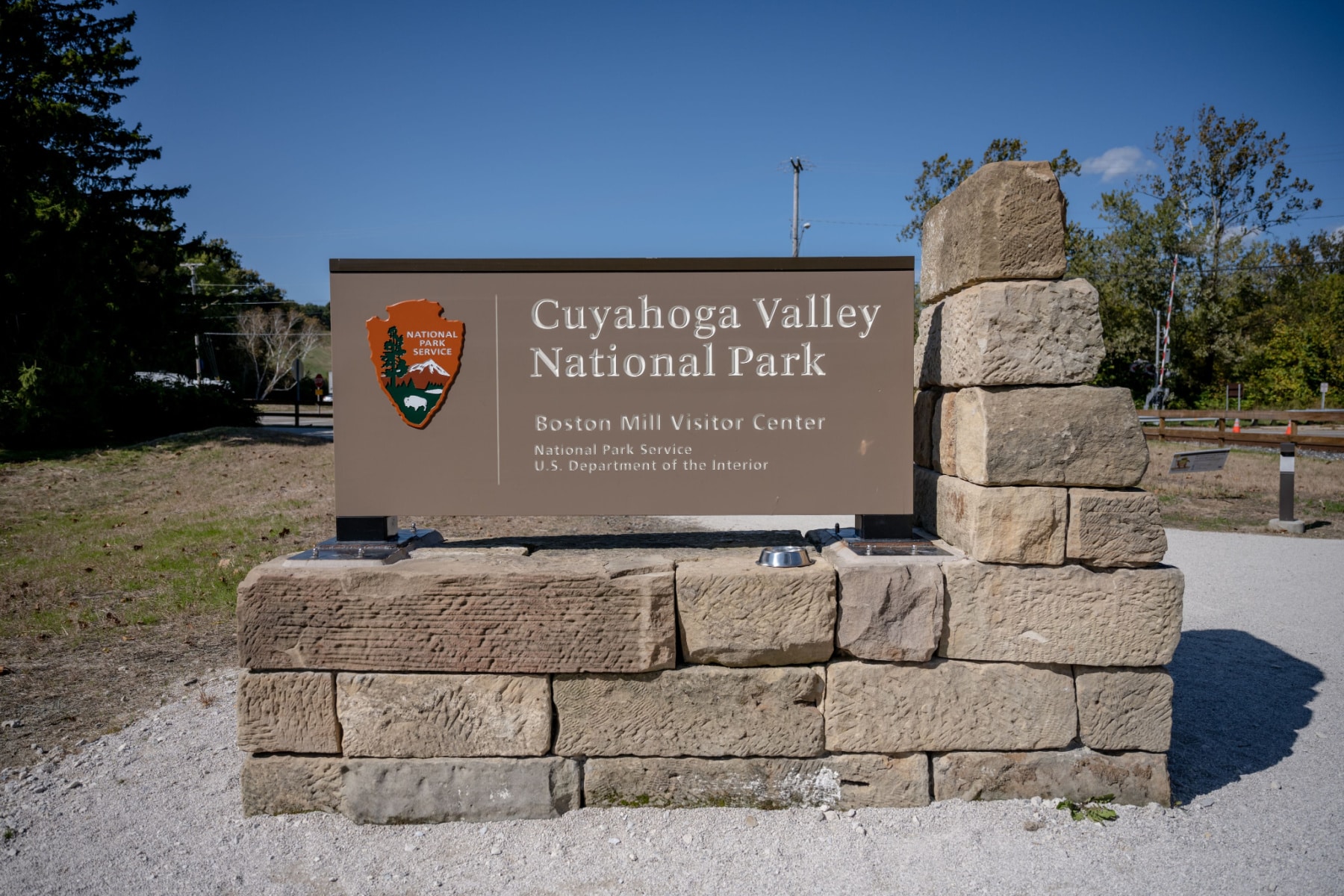
The Park Has A Diverse Landscape
The park also has a diverse landscape, including forests, wetlands, and waterfalls, which can be explored through hiking, biking, and other recreational activities. The park is home to a wide variety of wildlife and plant species, and the park staff works hard to protect and preserve the environment.
Cuyahoga Valley National Park is an important recreational resource for the local community, and it is also a popular tourist destination, attracting millions of visitors each year. The park offers visitors a chance to enjoy the great outdoors, explore the park’s natural beauty, and learn about the history of the area.
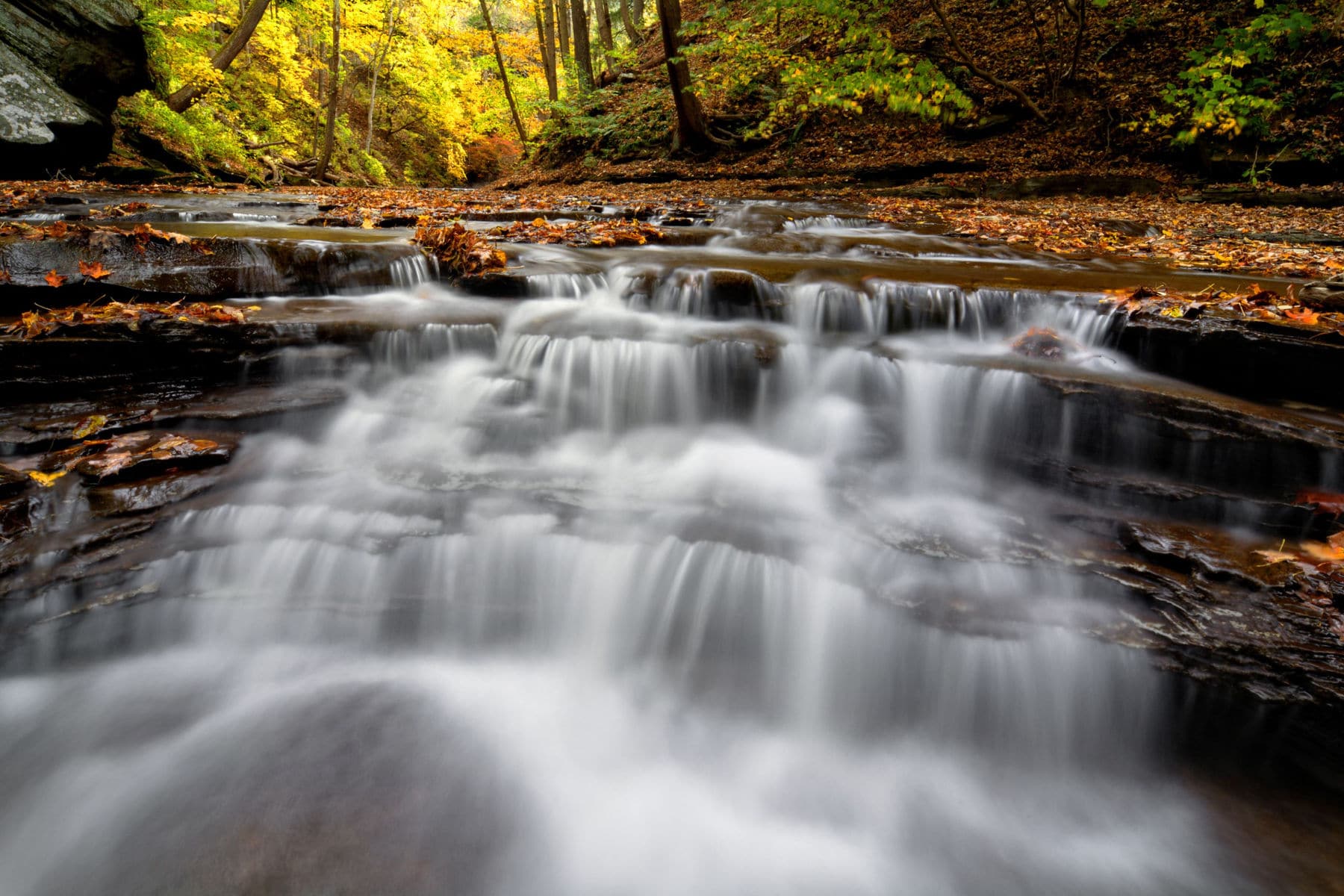
While You’re There, Check Out The Train Too
If you love trains, then Cuyahoga Valley National Park will be one of your favorite parks.
You may have driven, fished, hiked, rode horseback, skied or swam in a national park, but did you ever travel through it by train? All Aboard the Cuyahoga Valley Scenic Railroad!
Visitors to this national park can experience its natural wonders onboard a train as it winds its way through the Cuyahoga Valley and along the Cuyahoga River.
The trip by train provides passengers the opportunity to possibly spot eagles, deer, beavers, and herons in their natural habitat. It’s a great way to travel!
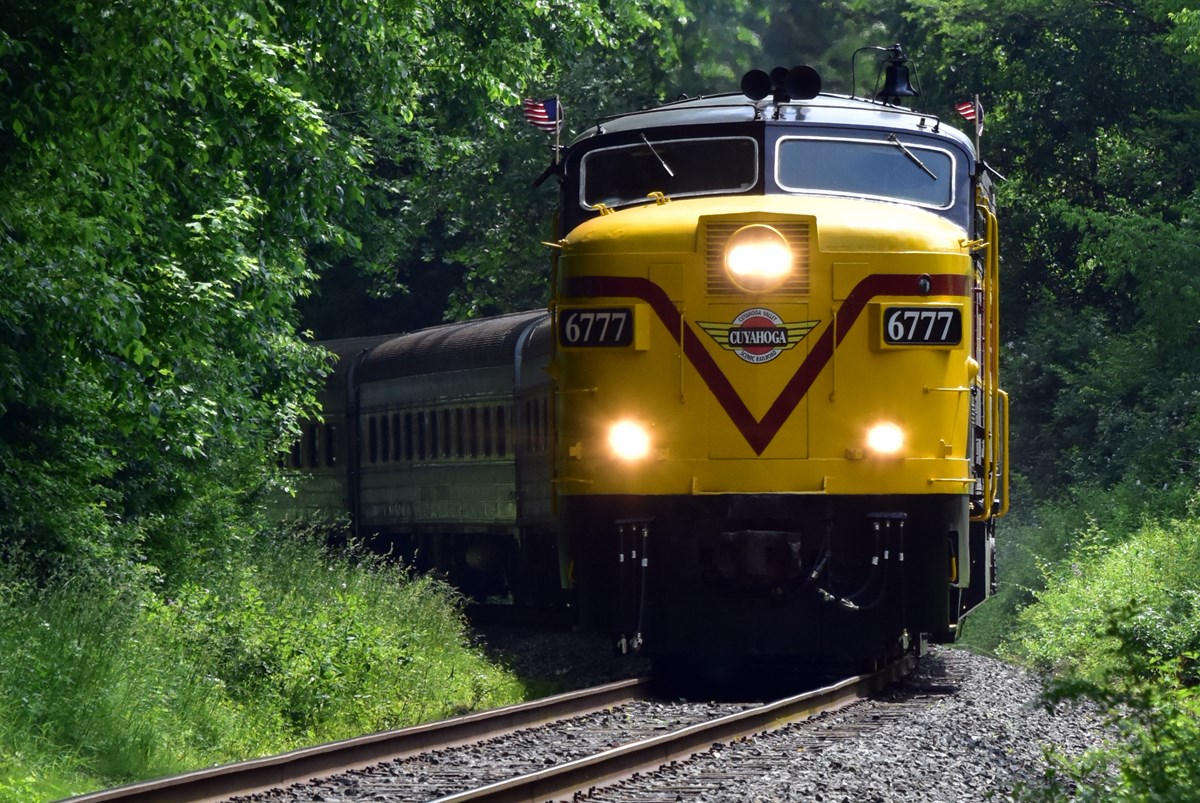
Hiking At Cuyahoga
Of course you don’t have to travel by train. There are over 125 miles of hiking trails available too. These trails range from nearly-level to more challenging, and pass through various habitats including woodlands, wetlands, and old fields.
If you’re looking to do some serious hiking then I would recommend picking up a copy of the Trail Guide Handbook: Cuyahoga Valley National Recreation Area. It’s an excellent resource which will enable you to make the most of your hiking experiences while at Cuyahoga.

Other Things To Do At Cuyahoga Valley National Park
Popular attractions and activities include:
- Beaver Marsh where you will enjoy exceptional scenery and wildlife. It’s one of the park’s most popular destinations.
- Brandywine Falls which is a magnificent 60-foot waterfall that’s accessed by boardwalk.
- The Ritchie Ledges are a geologic wonder. The trail around The Ledges is 2.2 miles and connects to a larger network of trails in the Virginia Kendall Area.
- Blue Hen Falls is a 15-foot waterfall. To get there you will hike 1.5 miles (one way) from Boston Mill Visitor Center.
- The Ohio & Erie Canal Towpath Trail is accessible by biking, walking or even wheelchair.
Cuyahoga Valley National Park also offers boating, fishing and horseback riding trails too.
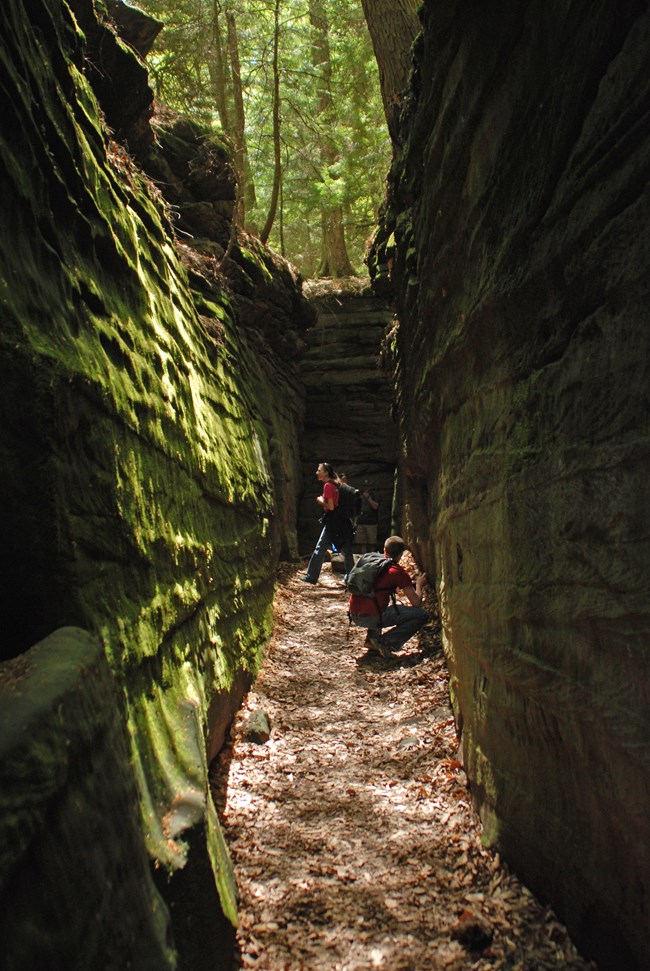
RELATED: 10 FASCINATING Facts About Cuyahoga Valley National Park
3. Dayton Aviation Heritage National Historical Park
Distance From Columbus: One hour & 8 minutes via I-70 W.
Growing up you were probably taught that “two wrongs don’t make a right.” As I’m an avid history buff, what I learned is that “two Wrights make one fabulous airplane.”
All joking aside, on a cold, windy morning on December 17, 1903, history was made. It was at the sandy dunes of Kitty Hawk, North Carolina, that two Ohio brothers changed the world.
These two intrepid brothers, named Orville and Wilbur Wright, built and successfully tested the first airplane, the Wright Flyer 1. They were early pioneers of flight who faced tremendous obstacles.
The Wrights were ridiculed as cranks and fools. As award-winning author and historian David McCullough notes:
“I don’t think they were ever happier in their lives than they were living in the extreme hardships of Kitty Hawk. The attacks of mosquitos, the winds, the struggle they had against the elements. But they loved it.”
They Had The Wright Stuff
Before experimenting with airplanes, the Wright brothers ran a bicycle shop in Dayton, Ohio. In 1900, the brothers traveled from Ohio to Kitty Hawk, North Carolina, to begin a series of flight experiments which would rewrite the history of aviation.
While their historic flight lasted only 12 seconds, it was nevertheless the first flight in history in which a machine carrying a man had raised itself by its own power into the air in full flight, had sailed forward without reduction of speed, and had finally landed at a point as high as that from which it started.
Now, if you’re interested in the history of aviation, then I’ve got two great book choices for you. There’s Flight: The Complete History of Aviation by R.G. Grant in cooperation with the Smithsonian Institution and Wings: A History of Aviation from Kites to the Space Age by Tom D. Crouch.

“Without the Wright brothers’ invention, Charles Lindbergh and Amelia Earhart would not have made their solo trans-Atlantic flights until much later. Aircraft would not have been as effective in the world wars, and jet and rocket engines would have been developed later as well. The Wright Flyer is also an antecedent to the space shuttle.”
-U.S. Department of the Interior, First Flight: The Wright Brothers and the Invention of the Airplane, by Tom Crouch
Things To Do At The Dayton Aviation Heritage National Historical Park
The Wright-Dunbar Interpretive Center is one of two visitor centers operated by the park in Dayton, Ohio. It’s located just west of downtown Dayton. Visitors can go there and learn the amazing story of Orville and Wilbur Wright.
The Center also celebrates the achievements of Paul Laurence Dunbar. Dunbar was an American poet, novelist, and short story writer. He was born in Dayton, Ohio, on June 27, 1872, to parents who had been enslaved in Kentucky before the American Civil War.
Dunbar went on to become one of the first influential African-American poets in American literature.
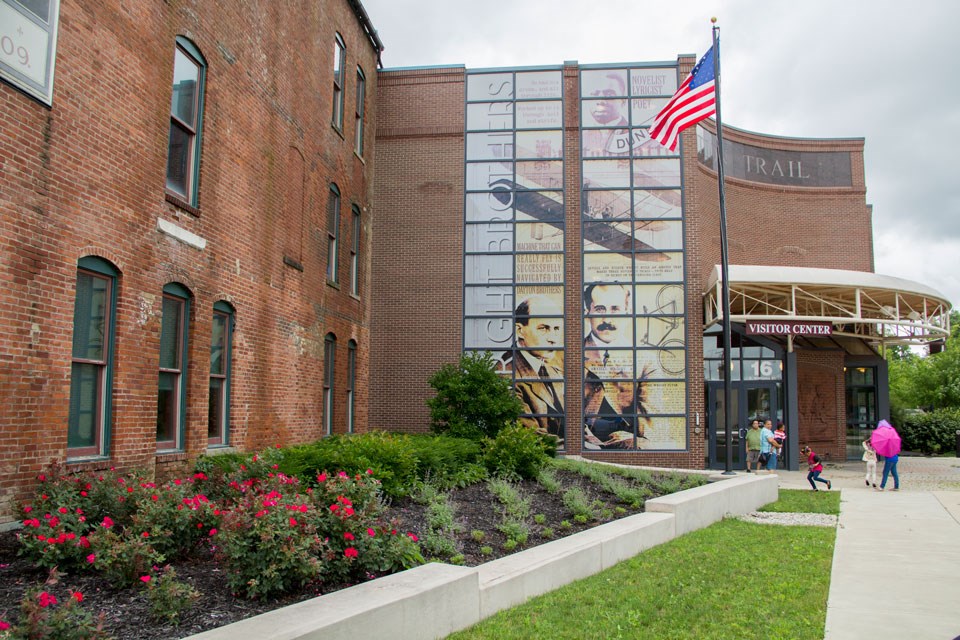
You Can Visit Paul Dunbar’s Historic Home
The Paul Laurence Dunbar House Historic Site honors his legacy.
Visitors will learn about the renowned poet and his mother, Matilda. The house, the interpretive exhibits and displays inside the home document Dunbar’s travels, lifestyle and poetry.
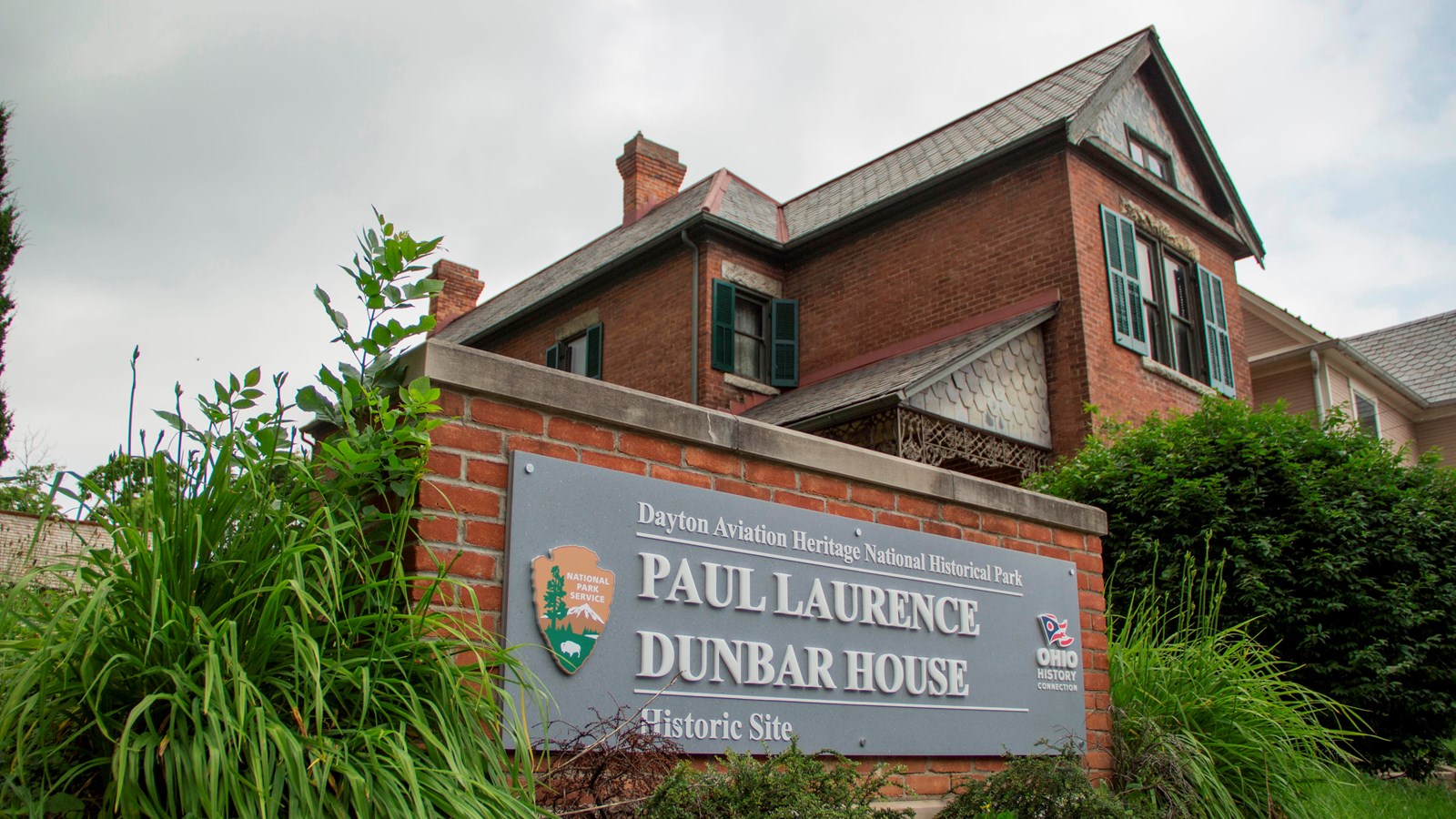
Visit The Site Where Aviation History Began
There is a second interpretative center. It’s the Huffman Prairie Interpretive Center. It’s located northeast of downtown Dayton, next to the Wright Patterson Air Force Base and the National Museum of the Air Force.
While you’re there you’ll have the opportunity to visit the site where aviation history began.
At Huffman Prairie Flying Field you can explore the area and view a replica hangar that is very similar to the one which the Wrights used to house their airplanes.
You can also tour a replica of the bike shop that the Wright Brothers operated. It’s part of Dayton Aviation Heritage National Historical Park.
Visitors can step back in time and tour the bike shop where the Wrights fixed bicycles and refined their mechanical ingenuity to develop the world’s first practical airplane.
And there’s Carillon Historical Park. It’s a 65-acre open-air history museum you can learn about the history of Dayton, Ohio. There you can view the world’s first practical airplane, the 1905 Wright Flyer III.
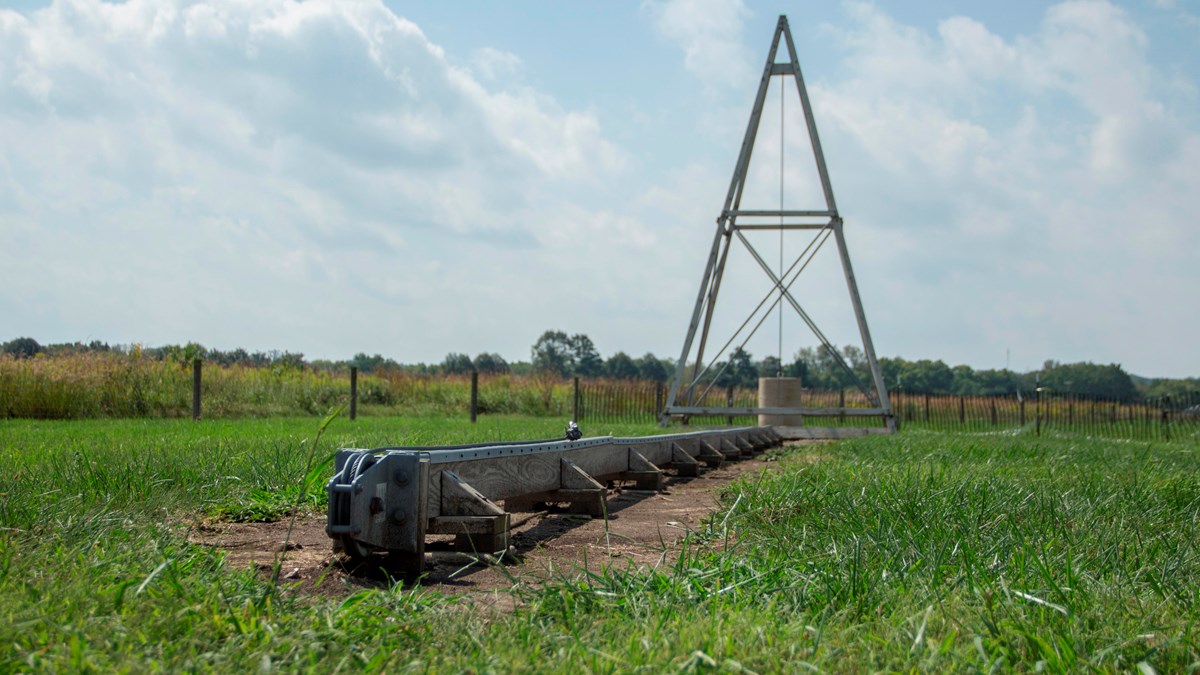
RELATED: 4+ EPIC Indiana National Parks You Should See
More National Parks Near Columbus
4. First Ladies National Historic Site
Distance From Columbus: Two hours via I-71 N & US-30 E.
Almost 50 women have served as the “First Lady” of the United States.
At the First Ladies National Historic Site in Canton, Ohio, you can explore a museum of rotating exhibits, watch a film which examines the legacies of America’s first ladies, and check out the National First Ladies’ Library.
You can also step back in time and visit the Saxton House. It’s the former home of First Lady Ida and President William McKinley.

America’s Most Influential First Lady
I love doing historical research which is probably why I ended up teaching history for almost 30 years.
If you’re someone who follows sports then you’re likely familiar with rankings. As a long-time resident of Georgia, I assure you that I do follow sports especially college football.
In college football and almost everything else, most rankings tend to change over time. And yet the woman considered by many knowledgeable experts to be America’s Most Influential First Lady hasn’t changed over time.
After the scrutiny of three expert opinion surveys over twenty years, Eleanor Roosevelt is still ranked first among all other women who have served as America’s First Ladies, according to an expert opinion poll conducted by the Siena (College) Research Institute (SRI).
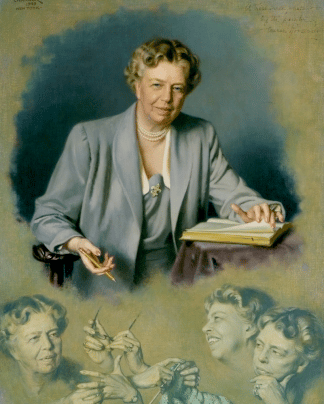
America’s Longest Serving First Lady
Eleanor Roosevelt served as First Lady for over 12 years. She played an active role in advising her husband and was the first first lady to hold her own press conferences.
Mrs. Roosevelt also championed causes, such as Women’s Rights, and supported programs, such as the one which gave African Americans the opportunity to become fighter pilots during World War Two.
Eleanor Roosevelt was the first first lady to remain an influential political force after her husband’s death. She served as Chair of the United Nations Commission on Human Rights.
If you’re interested in learning more about this remarkable First Lady then I recommend Eleanor Roosevelt, Fighter for Justice: Her Impact on the Civil Rights Movement, the White House, and the World by Ilene Cooper.
RELATED: 25 EPIC New York National Parks (Helpful Guide + Photos)
While In Canton, Ohio, There’s Another Hall Of Fame Worth Seeing
We’re More Than Just Parks which means we’re more than just parks. If you’re planning on traveling to Canton, Ohio, to see one collection of “All Stars” then why not see two while you’re there.
The Pro Football Hall of Fame is dedicated to preserving the history and honoring the greatest players, coaches, officials, and contributors of professional American football.
The Hall of Fame was established in 1963 and is located in Canton, Ohio, the birthplace of the sport.

The Idea Originated With A Group Of Sports Enthusiasts
The idea for the Hall of Fame originated in the early 1960s when a group of sports journalists, including NFL Commissioner Pete Rozelle, discussed the lack of recognition for the greatest players and contributors in professional football history.
The Hall of Fame was officially established in 1963, with its first class of inductees being enshrined in September of that year.
Since then, the Hall of Fame has grown to become one of the most prestigious honors in American sports, with over 300 inductees representing every era of professional football history.
The Hall of Fame is now housed in a multi-million dollar facility that features interactive exhibits, a state-of-the-art theater, and a vast collection of football memorabilia, including game-worn jerseys, trophies, and other artifacts.
Each year, a new class of inductees is enshrined in the Hall of Fame during a weekend of events that includes a parade and a gold jacket dinner, where the inductees receive the iconic gold jacket symbolizing their status as a Hall of Famer.
The Pro Football Hall of Fame continues to be an important institution in the sport, honoring the best of the best and preserving the history of professional American football for future generations.

5. Hopewell Culture National Historic Park
Distance From Columbus: 55 minutes via US-23 S.
Hopewell Culture National Historical Park is located in Chillicothe, Ohio and is dedicated to preserving and interpreting the history of the Hopewell people.
The Hopewell culture was a complex society that flourished in the Ohio River Valley from about 200 BC to 500 AD. They are known for their large earthwork mounds, including circular and square enclosures, and intricate geometric designs that are still visible at the park today.
Visitors to Hopewell Culture National Historical Park can take guided tours of the mounds, including the imposing 20-acre Mound City Group, which contains at least 23 mounds. There are also several hiking trails that wind through the park, providing visitors with the opportunity to explore the natural beauty of the Ohio River Valley and see the mounds from different perspectives.
In addition to the mounds, the park features a museum that showcases artifacts and exhibits related to the Hopewell culture, including pottery, jewelry, and other items. The museum also provides visitors with an overview of the Hopewell people and their way of life, including their beliefs, customs, and technological innovations.
Hopewell Culture National Historical Park is an important historical site and a valuable resource for those interested in learning about the culture and history of the Ohio River Valley. It offers a unique opportunity to experience the beauty and mystery of the Hopewell culture, and to explore the legacy of this fascinating ancient society.
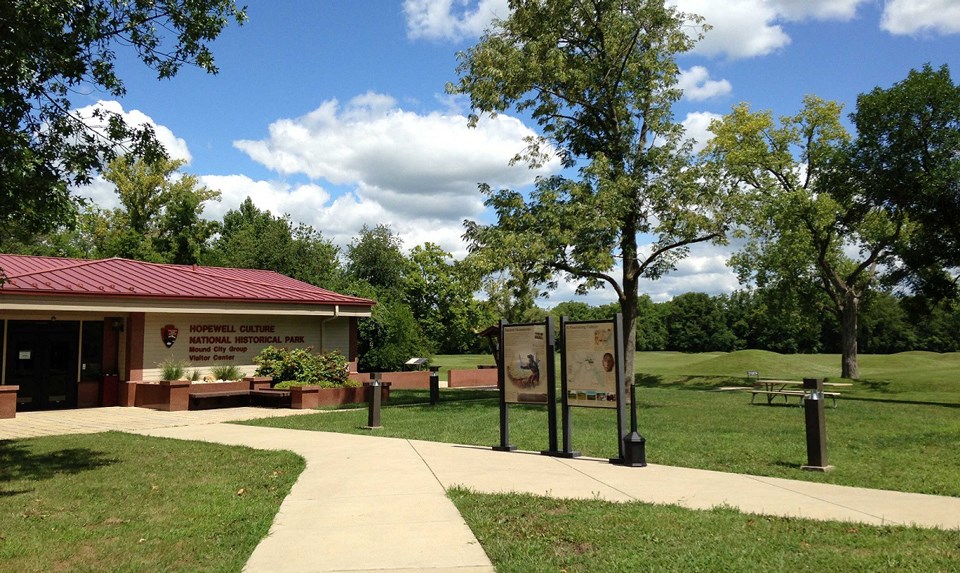
RELATED: 6+ SENSATIONAL Michigan National Parks
6. James A. Garfield National Historic Site
Distance From Columbus: Two hours & 22 minutes via I-71 N.
Now here’s a fascinating fact. More of our country’s presidents come from Ohio than from any other state. Eight of 45 American presidents were elected from the Buckeye State, earning Ohio the nickname “the Mother of Presidents.”
Given this fact then it’s only fitting that Ohio National Parks offers visitors not just one presidential site but two.
James A. Garfield served as Brigadier General in the Civil War. President Abraham Lincoln, however, felt that Garfield could be of greater use to the Union cause in Congress.
So, being a good soldier, Garfield resigned his commission in 1862 to serve eighteen years in Congress. He became the leading Republican in the House of Representations.
In 1880, Garfield was nominated for the presidency. He defeated his Democratic opponent, another former Civil War General named Winfield Scott Hancock, by a mere 10,000 votes.
Historians consider Garfield to have been a “brilliant maybe.” He was committed to political reform and hemispheric cooperation. Sadly, on July 2nd, 1881, he was struck by an assassin’s bullet.
Garfield spent two and a half months in a slow, agonizing decline before dying on September 19, 1881.
To learn more about this fascinating individual I recommend reading Destiny of the Republic: A Tale of Madness, Medicine and the Murder of a President by Candice Millard.
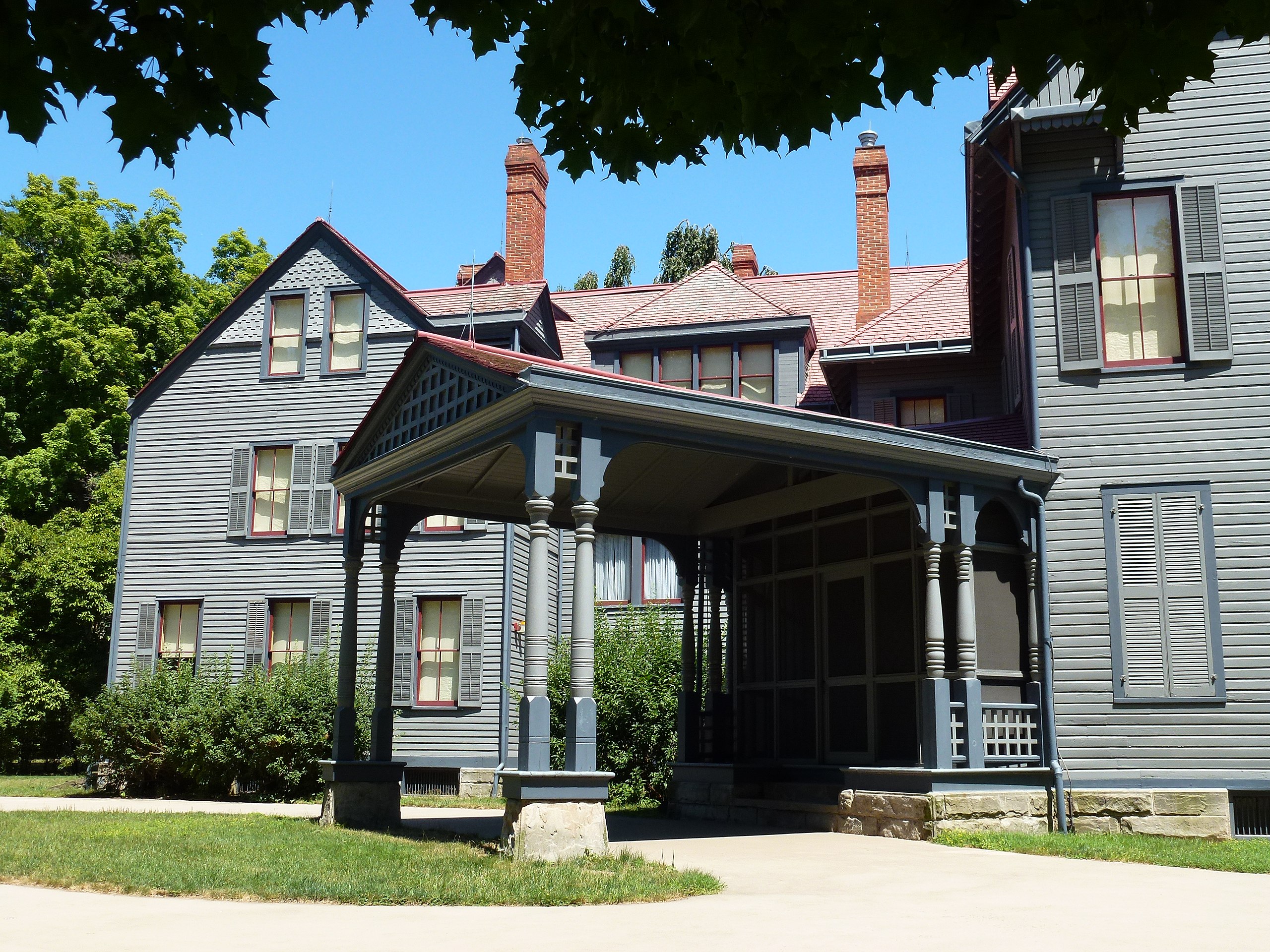
Things To Do At The James A. Garfield National Historic Site
If you’re a first timer then I recommend that you start your visit to James A. Garfield National Historic Site in the Visitor Center. There you can see the 18 minutes biographical movie of James A. Garfield and tour the museum exhibits which examine his life.
You’ll have the opportunity to step back in time, put yourself in the mindset of our nation’s 20th president and imagine what might have been had Garfield not been tragically cut down at the outset of what many believed could have been a consequential presidency.
Then you can explore the beautiful grounds surrounding Garfield’s home.

RELATED: 6 EPIC Minnesota National Parks Worth Visiting
7. Lewis & Clark National Historic Trail
The Lewis and Clark National Historic Trail follows the route taken by the Lewis and Clark Expedition, also known as the Corps of Discovery, during their journey from St. Louis, Missouri to the Pacific Ocean and back between 1804 and 1806.
The trail covers more than 4,900 miles and passes through 11 states, including Missouri, Illinois, Kentucky, Indiana, Ohio, West Virginia, Pennsylvania, Virginia, North Dakota, Montana, and Oregon.
The Lewis and Clark Expedition was commissioned by President Thomas Jefferson to explore the western part of the United States and find a water route to the Pacific Ocean. Led by William Clark and Meriwether Lewis, the expedition set out from St. Louis in May 1804 with a team of 33 men, including French-Indian guide Sacagawea.
Over the next two years, they encountered many challenges, including rugged terrain, harsh weather conditions, and encounters with Native American tribes. Despite these difficulties, they successfully completed their mission, gathering valuable information about the western territories and laying the groundwork for future western expansion.
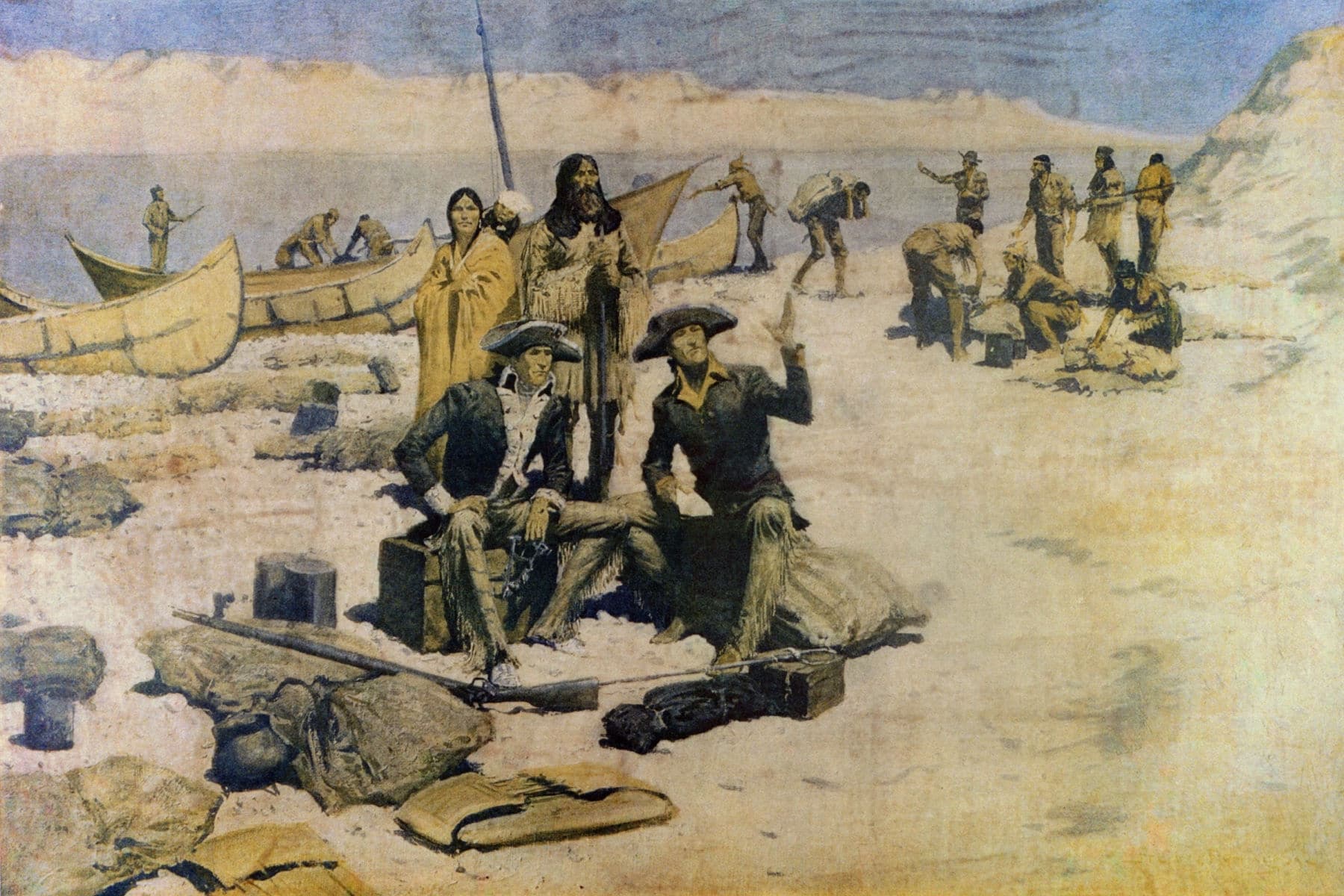
The Trail Serves As A Reminder Of The Expedition’s Accomplishments & Significance In American History
Today, the Lewis and Clark National Historic Trail serves as a reminder of the expedition’s accomplishments and its significance in American history. Visitors to the trail can follow in the footsteps of Lewis and Clark and experience the natural beauty and cultural diversity of the American West.
There are numerous visitor centers and interpretive sites along the trail, offering information about the expedition and its history, as well as opportunities for hiking, camping, and other outdoor activities.
The Lewis and Clark National Historic Trail is an important cultural and historical resource that provides a glimpse into America’s early western expansion and the bravery and determination of the explorers who paved the way.
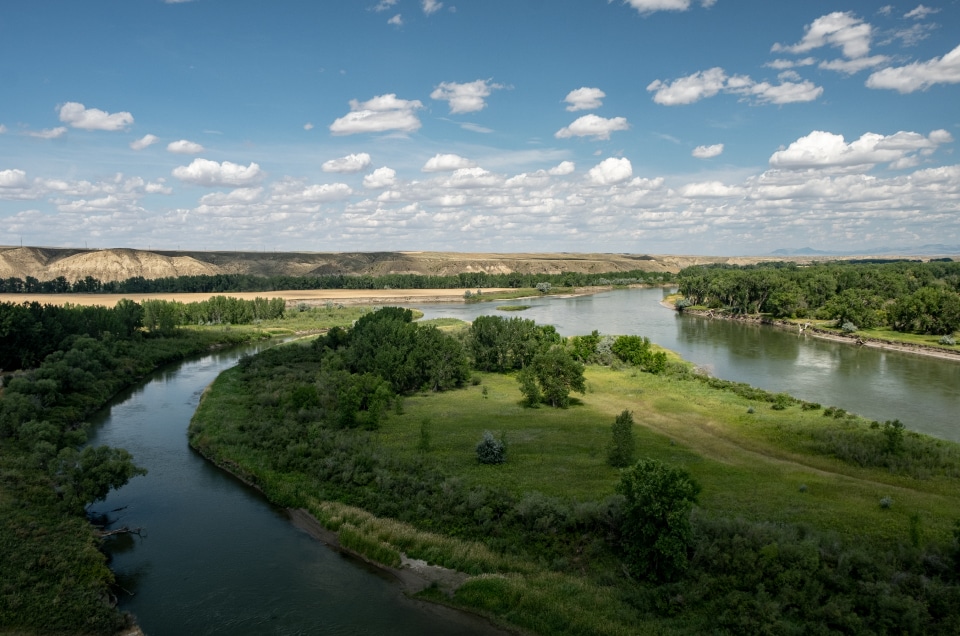
What Can I See In Ohio That’s Connected To Lewis & Clark
Places of interest to visit in Ohio include:
- Campus Martius Museum-Founded in 1788 by Rufus Putnam, Marietta, Ohio, was the first settlement established in the Northwest Territory. The stockade was known as Campus Martius, so named because it put settlers and soldiers alike in mind of the Fields of Mars, a training ground once used by ancient Roman legions.
- Eulett Center-The Eulett Center takes its name from Charles A. Eulett, a teacher and naturalist from Adams County who advocated for the protection of local prairies and grasslands in the 1960s and 70s. The nature preserve protects 20,000 acres of pristine forestlands, prairies, ravines, and slopes.
- Historic Fort Steuben-It’s a reconstructed military fort located in Steubenville, Ohio, along the Ohio River. The Reconstruction of Fort Steuben began shortly after 1986, 200 years after the fort’s initial creation, and was led by the Old Fort Steuben Project. (Source: NPS)

RELATED: 5 EPIC Nebraska National Parks Worth Visiting
Still More National Parks Near Columbus
8. North Country National Scenic Trail
Distance From Columbus: Four hours & 30 minutes via US-23 N. & I-96 W.
The North Country National Scenic Trail provides visitors opportunities from bird watching to backpacking.
The trail traverses eight northern states and connects a host of natural, historic and cultural sites. You can see everything from small towns to larger cities, valleys to hilltops and much more.
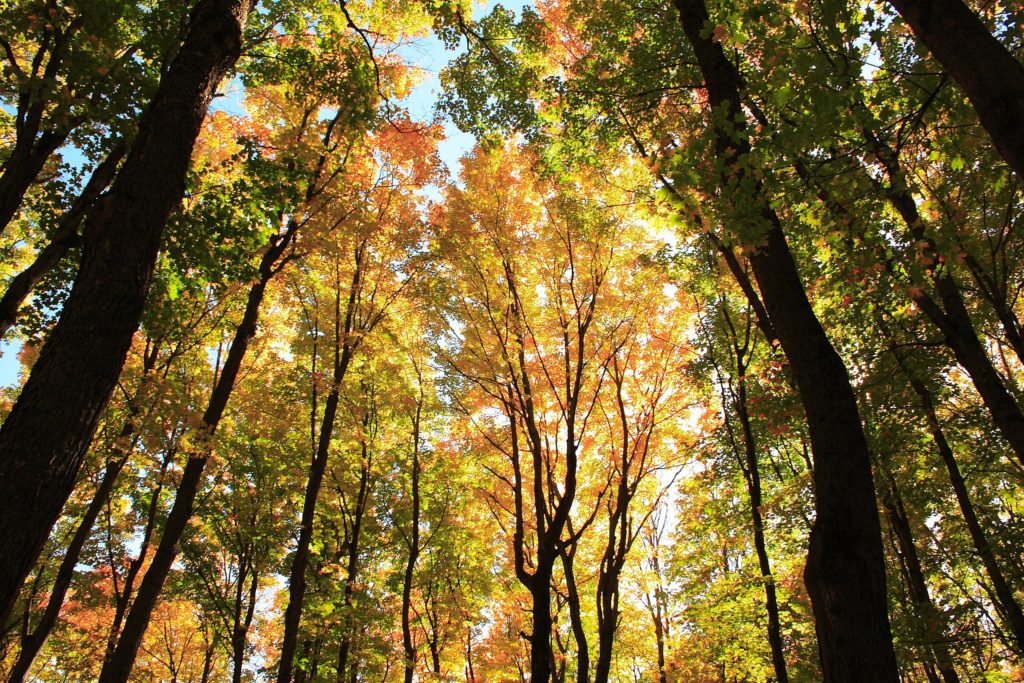
The History Of The North Country National Scenic Trail
In 1980, the North Country National Scenic Trail (NCT) was authorized by Congress. It stretches 4,600 miles from upstate New Hampshire to its western terminus at Lake Sakakawea State Park.
The trail actually traversed seven states until 2019 when Vermont was added. The Vermont section is only about 70 miles long.
The Trail enters Ohio from southern Michigan and joins the Wabash Cannonball Trail.
It shortcuts a portion of this rail trail through Maumee State Forest and Oak Openings Metropark. Dipping south and following the Maumee River, the NCT converges with the Buckeye Trail.
It passes through more urban areas like Dayton and Xenia, skirts east of Cincinnati, and nearly reaches Kentucky before trending further east then eventually north again. (Source: North Country Trail Association)
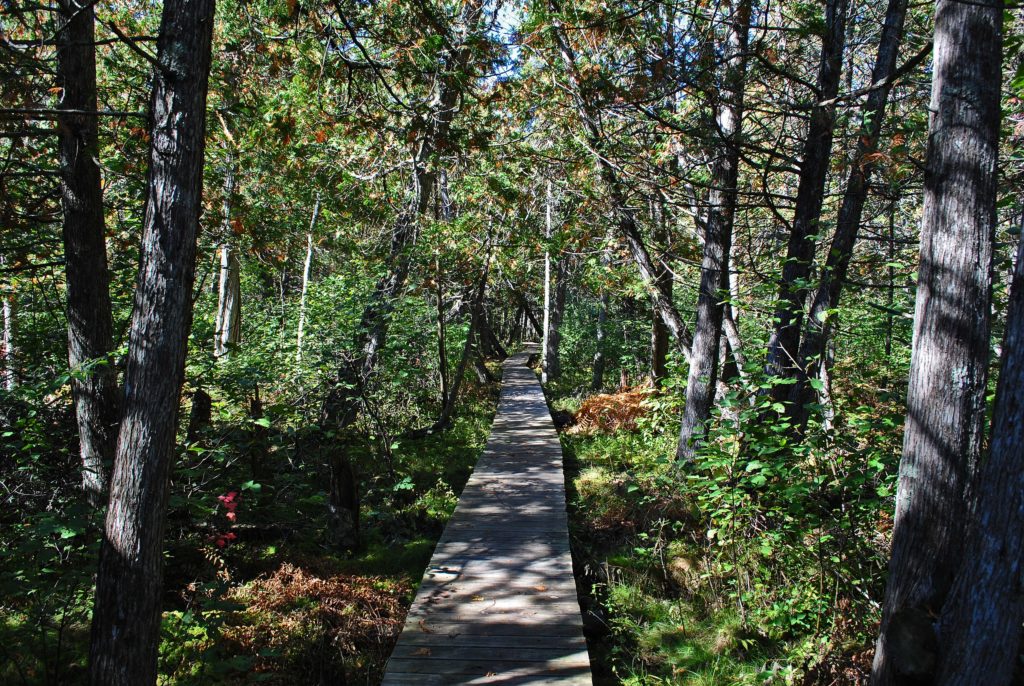
RELATED: 3 EPIC Vermont National Parks For Your Visit To The Green Mountain State
9. Perry’s Victory & International Peace Memorial
Distance From Columbus: Three hours via OH-4 N.
Perry’s Victory & International Peace Memorial is located on South Bass Island in Lake Erie, Ohio. The memorial was built to commemorate the Battle of Lake Erie, fought during the War of 1812, and to honor the lasting peace between the United States, Great Britain, and Canada.
The Battle of Lake Erie took place on September 10, 1813, and was a decisive victory for the United States over Great Britain. The battle was significant because it marked the first time in history that an American naval force had defeated a British fleet, and it helped secure American control of the Great Lakes region.
After the war, a movement to commemorate the victory and honor the peaceful relations between the United States, Great Britain, and Canada led to the establishment of the memorial in the early 20th century. The memorial was designed by architect Henry Bacon, who also designed the Lincoln Memorial in Washington, D.C.
A Symbol Of Peace & A Popular Tourist Destination
Construction of the memorial began in 1912 and was completed in 1915. The memorial consists of a 352-foot Doric column, the tallest column in the world, topped by a bronze statue of Master Commandant Oliver Hazard Perry, the hero of the Battle of Lake Erie.
The column sits on a star-shaped base, which contains exhibits and artifacts related to the War of 1812 and the peace between the three nations.
Over the years, Perry’s Victory & International Peace Memorial has become a symbol of peace and a popular tourist destination, attracting visitors from all over the world. The memorial is managed by the National Park Service and is open to the public year-round, offering stunning views of Lake Erie and the surrounding islands.

10. William Howard Taft National Historic Site
Distance From Columbus: One hour & 35 minutes via I-71 S.
The William Howard Taft National Historic Site is located in the Mount Auburn neighborhood of Cincinnati, Ohio.
The site preserves the childhood home of William Howard Taft, the 27th President of the United States, and the only person to have served as both President and Chief Justice of the Supreme Court.
The Taft family lived in the house from 1851 to 1872, during which time William Howard Taft was born and spent his formative years. The house is a two-story brick building, representative of the style of middle-class homes in the mid-19th century.
In the late 1970s, the Taft family donated the house to the National Park Service, and it was designated as a National Historic Site in 1980. The house has since been restored to its appearance during the Taft family’s residency, and it is now open to the public as a museum.
Tour The Home & Learn About The Only Man To Serve As President & Chief Justice Of The Supreme Court
Visitors to the William Howard Taft National Historic Site can tour the home and learn about the life and legacy of William Howard Taft, as well as the history of the Taft family and the Mount Auburn neighborhood. The site also features exhibits on Taft’s presidency, his time on the Supreme Court, and his role in the Progressive Era.
In addition to the house, the site includes a small visitor center, which offers information and resources for visitors, and a park-like setting with a large lawn, walkways, and a variety of trees and shrubs.
The William Howard Taft National Historic Site is an important part of American history and a fascinating destination for anyone interested in the life and legacy of one of our country’s most distinguished public servants.
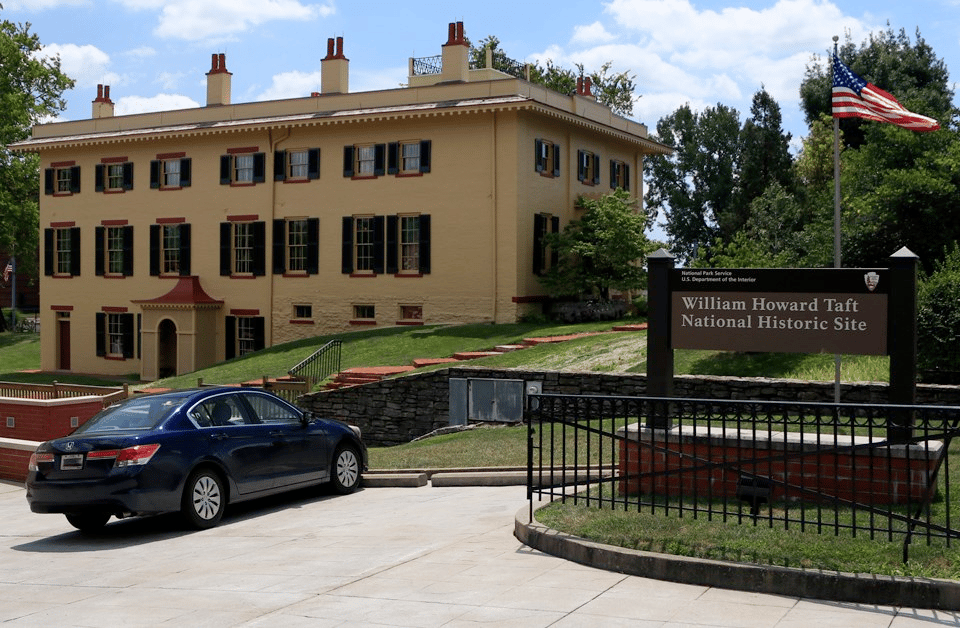
National Parks Near Columbus FAQ
Charles Young Buffalo Soldiers National Monument. Distance From Columbus: One hour via I-71 S.
Cuyahoga Valley, a national park in Ohio, is very close to Cleveland and Akron and provides recreational opportunities along the Cuyahoga River. The winding Cuyahoga (the “Crooked River”) gives way to 33,000 acres of deep forests, rolling hills, and open farmlands.
Why Trust Us About National Parks Near Columbus?
We’re Jim Pattiz and Will Pattiz, collectively known as the Pattiz Brothers (and sometimes the Parks Brothers) and we absolutely LOVE the national parks.
You should probably know that we don’t just make this stuff up out of thin air. We’ve spent our entire adult lives exploring and filming America’s national parks and public lands.
We’ve worked with the National Park Service, the Department of Interior, USDA, and the U.S. Forest Service for years creating films on important places and issues. Our work has been featured in leading publications all over the world and even some people outside of our immediate family call us experts on the national parks.
Meet The Parks Brothers
Map Of National Parks Near Columbus
To Learn More About The Buckeye State
- For Race and Country: The Life and Career of Colonel Charles Young by David Kilroy.
- Black Officer in a Buffalo Soldier Regiment: The Military Career of Charles Young by Brian G. Shellum.
- The Wright Brothers by David McCullough.
- First Women: The Grace and Power of America’s Modern First Ladies by Kate Andersen Brower.
- Women of the White House: The illustrated story of the first ladies of the United States of America by Amy Russo.
- Destiny of the Republic: A Tale of Madness, Medicine and the Murder of a President by Candice Millard.
- Undaunted Courage: Meriwether Lewis, Thomas Jefferson, and the Opening of the American West by Stephen Ambrose.
- Oliver Hazard Perry: Honor, Courage, and Patriotism in the Early U.S. Navy by David Curtis Skaggs.
- The Naval War of 1812: A Complete History by Theodore Roosevelt.
- The William Howard Taft Presidency by Lewis L. Gould.
RELATED: 45 Best National Parks Books (Great Gifts For Parks Lovers)
List Of National Parks Near Columbus
- Charles Young Buffalo Soldiers National Monument
- Cuyahoga Valley National Park
- Dayton Aviation Heritage National Historical Park
- First Ladies National Historic Site
- Hopewell Culture National Historic Park
- James A. Garfield National Historic Site
- Lewis & Clark National Historic Trail
- North Country National Scenic Trail
- Perry’s Victory & International Peace Memorial
- William Howard Taft National Historic Site
We Hope You’ll Follow Our Journey
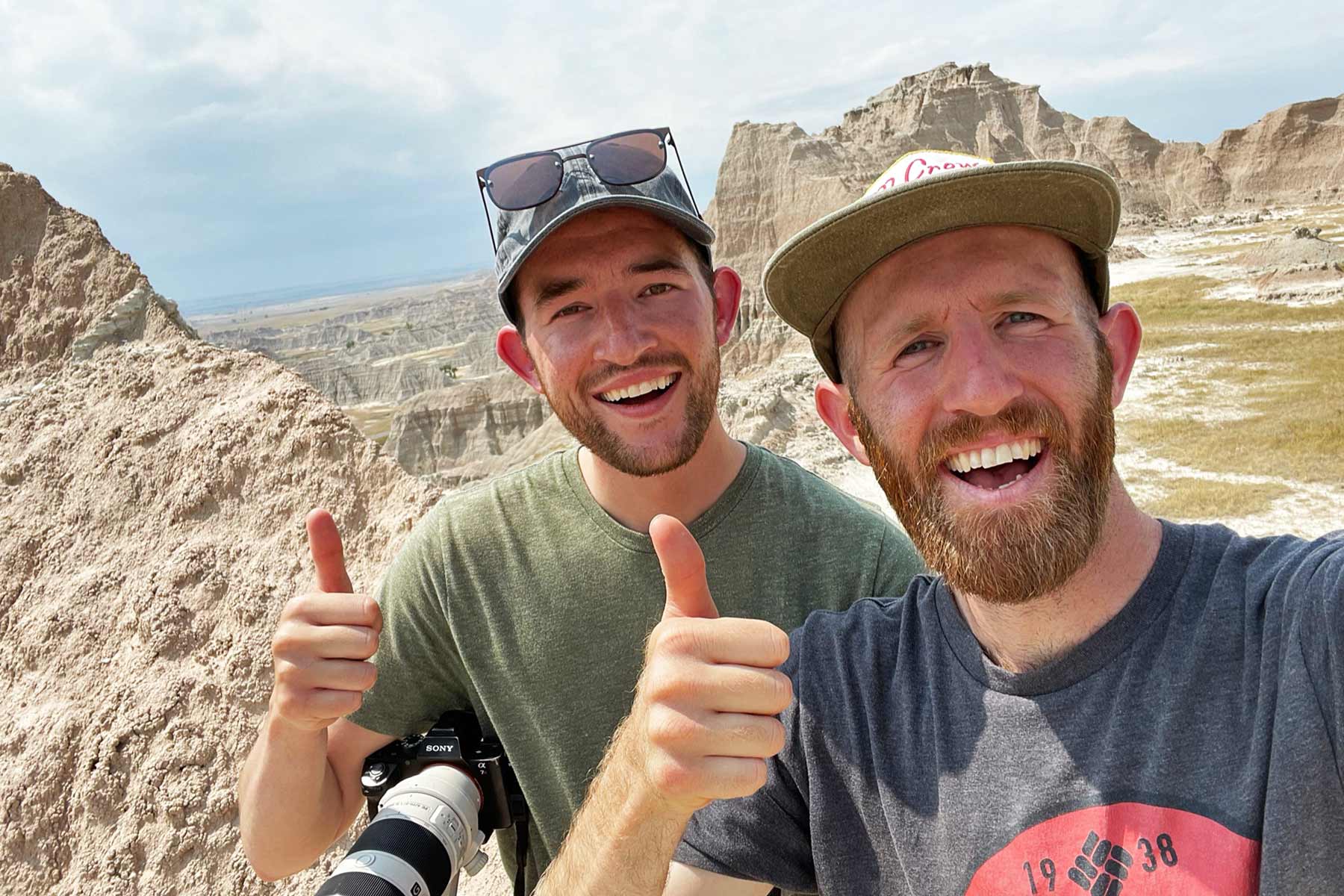
Our goal here at More Than Just Parks is to share the beauty of America’s national parks and public lands through stunning short films in an effort to get Americans and the world to see the true value in land conservation.
We hope you’ll follow our journey through the parks and help us to keep them the incredible places that they are. If you’re interested in joining the adventure then please sign up below!
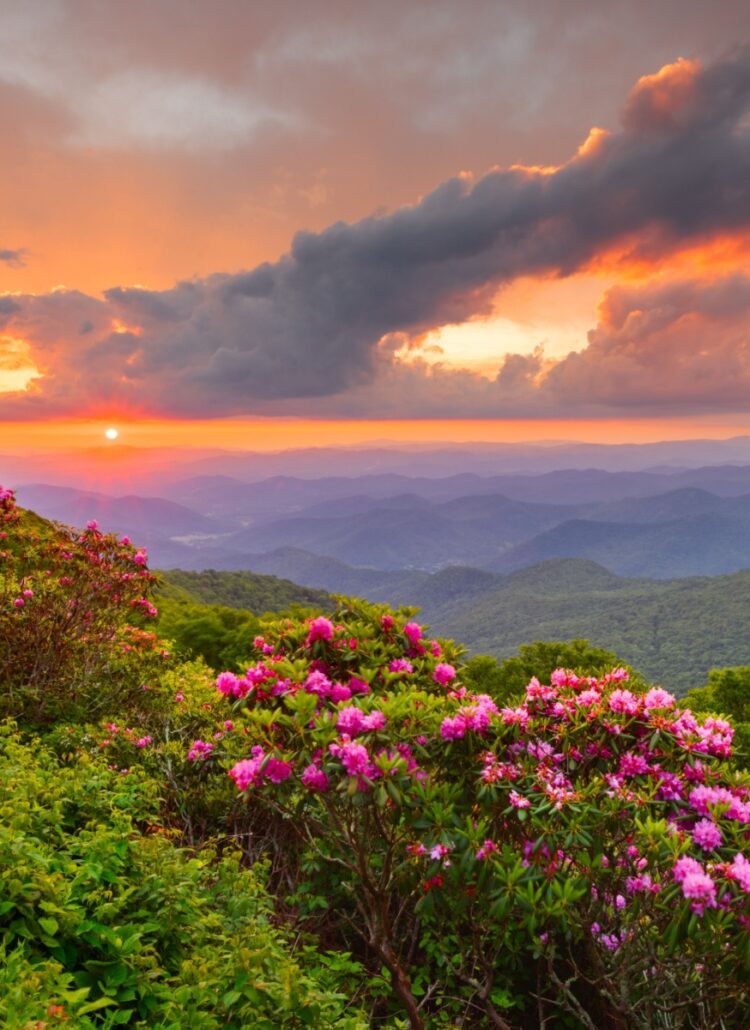

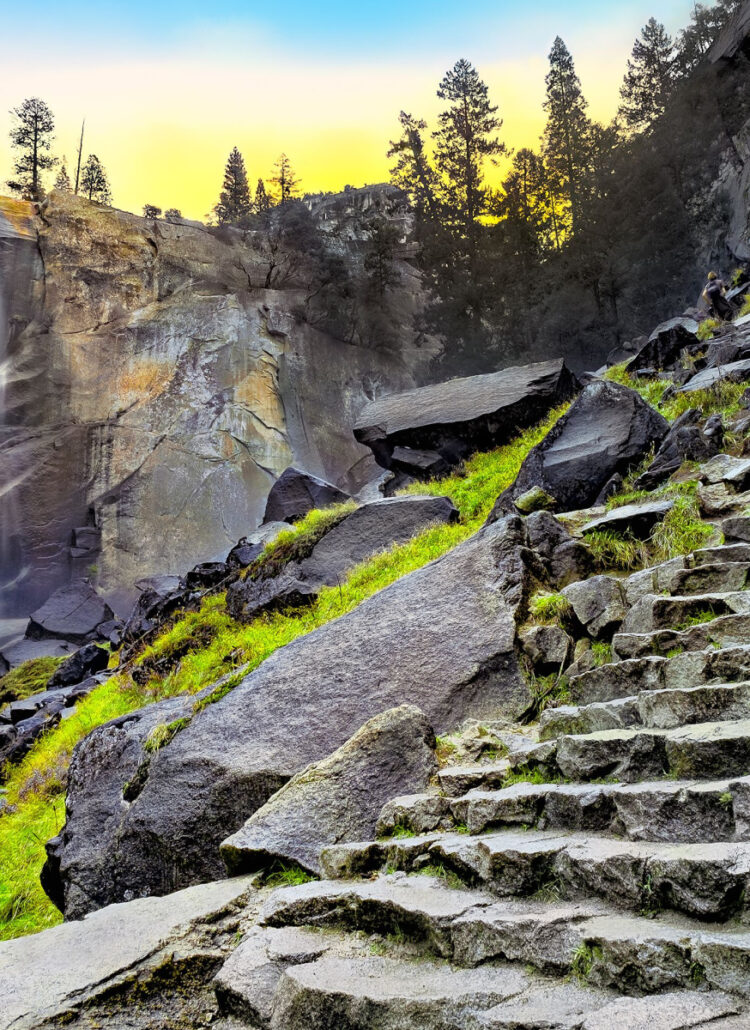
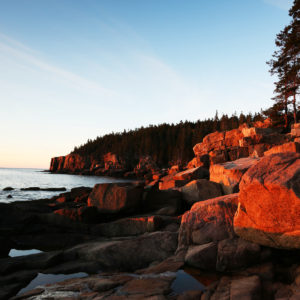
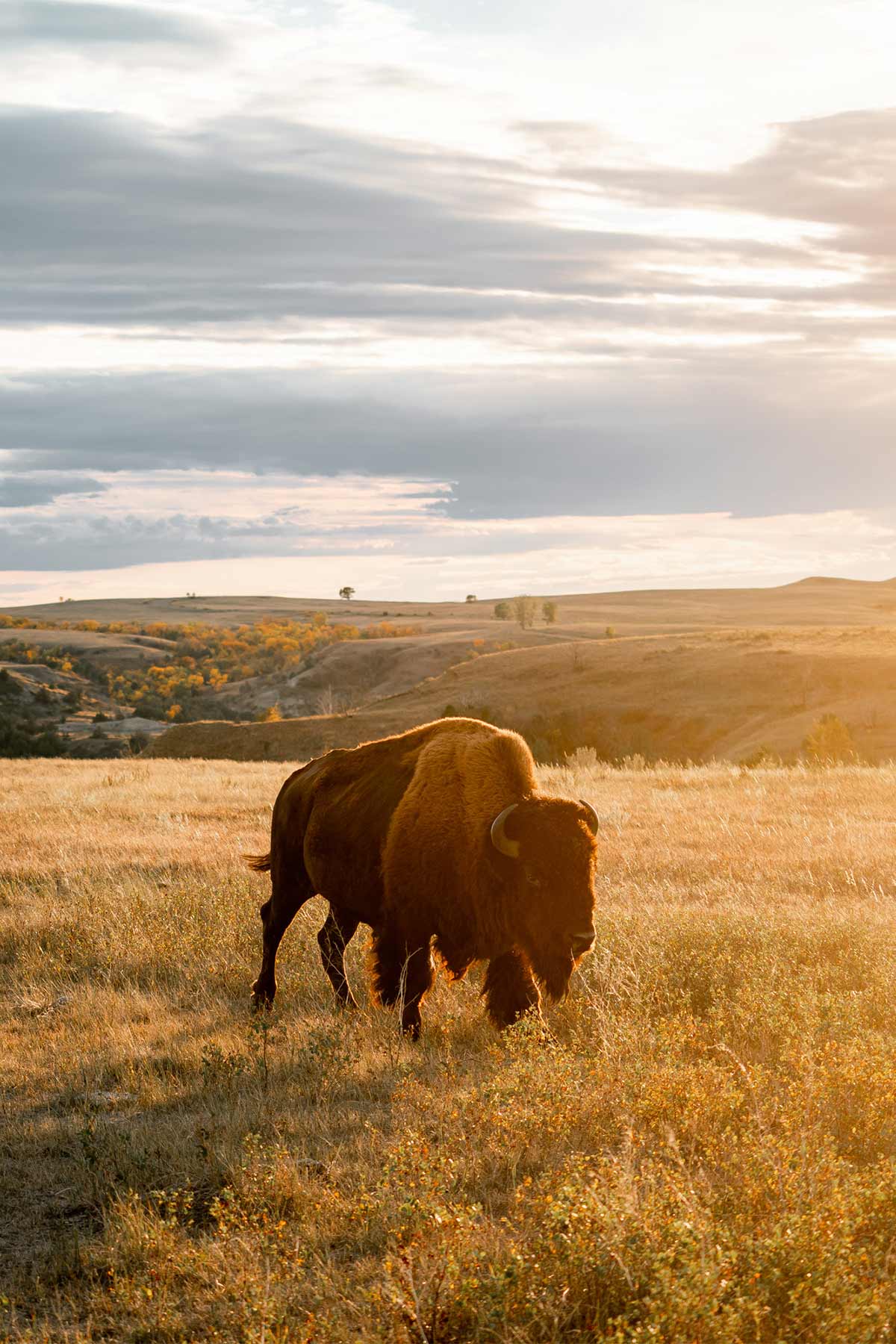
Leave a Reply